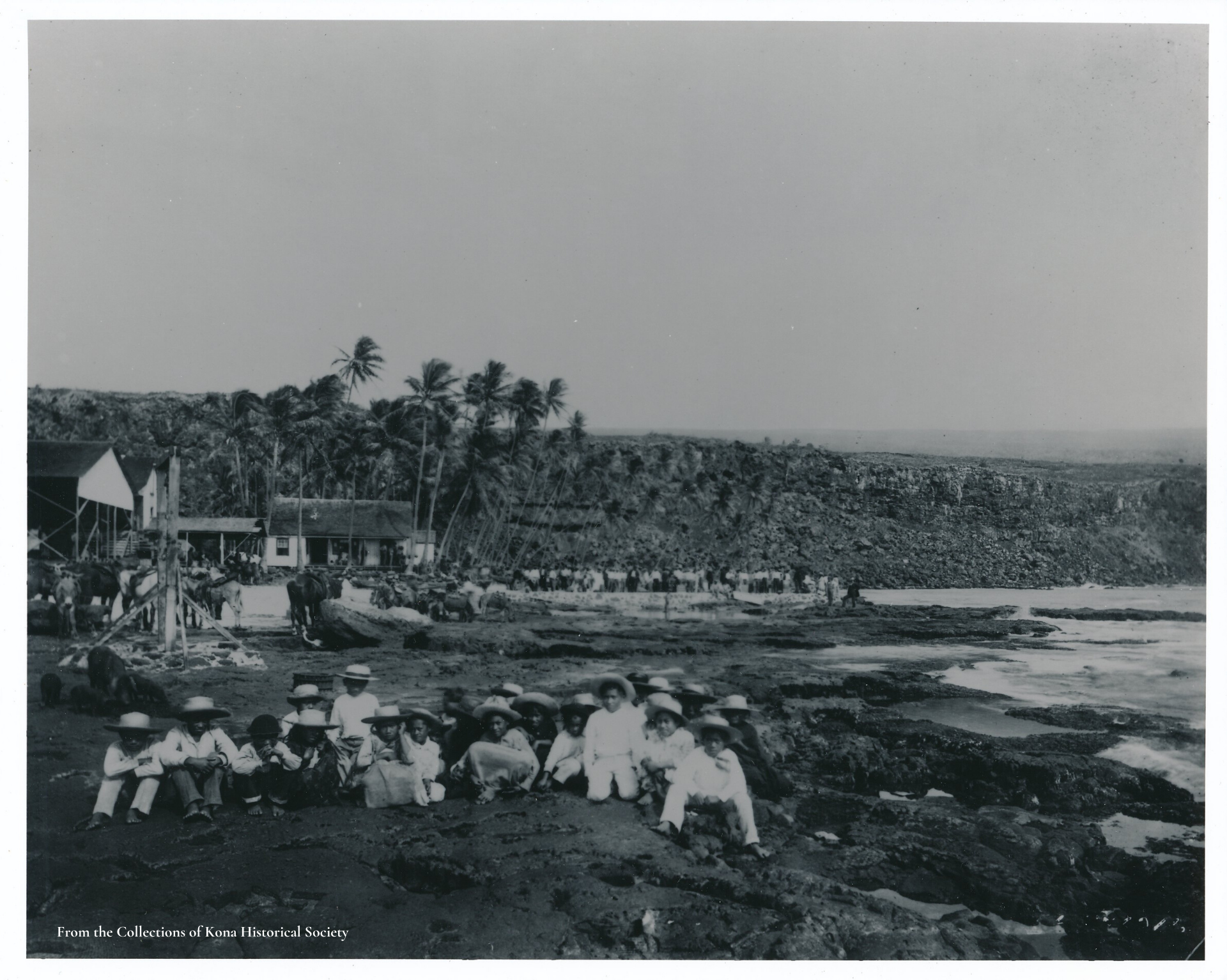Hoʻokena
NOTE TO HAʻILONO EXTENDED READERS:
Kona Historical Society is pleased to present this featured story, which was compiled by the Society for a publication called "A Guide to Old Kona,” Copyright 1998. Permissions to use this copyrighted material must be obtained from Kona Historical Society, the copyright holder, and in writing.
Hoʻokena was once a vibrant 19th-century port town rivaled only by Kailua-Kona in size and importance. Tsunami, a drastic drop in the Hawaiian population and the end of interisland steamship travel have combined to erase almost all traces of Hoʻokena’s colorful past. In the 1880s, Hoʻokena contained a school, two churches, two stores, a sturdy wharf, a courthouse built in 1884 and a fine cluster of well-built homes.
Queen Liliuokalani described Hoʻokena in 1881 as being distinctly Hawaiian. In 1890, Whitney’s tourist guide said, “Hoʻokena is … probably the last specimen on the islands of a purely Hawaiian community.” Ho’okena attracted author Robert Louis Stevenson, who visited in 1889 and stayed for a week. His host was Mr. Nahinu, a former judge and, at that time, storekeeper for Henry Cooper. (The Hawaiian song “Kupa’s Landing” refers to Cooper’s store at Hoʻokena.) Stevenson’s “Travels in Hawaii” includes a story about a young Hawaiian girl and her mother being transported from Ho’okena to Molokai’s leper settlement at Kalaupapa.
By the 1890s, Chinese immigrants moved into town. Licenses issued included those for cake peddling, selling food and merchandise, running a retail store, butchering pork and operating two restaurants and a hotel. In 1915, the Hilo newspaper reported that the community held a Fourth of July celebration featuring canoe races and a big luau attended by 500 Kona citizens.
By 1929, the wharf was receiving freight only twice a month, so the stores and post office had closed.
During World War II, soldiers stationed nearby amused themselves by shooting at a colony of seabirds that nested in the lava cliffs above the beach. The birds never recovered. Between the termites and the earthquake of 1951, both Pukaana Church (1855) and Maria Lanakila (1860s) collapsed into ruin. A hike along the coast from the county park at Hoʻokena to the north reveals traces of old Hoʻokena: stone house platforms, church ruins and fragments of the old wharf.

